The way SEO works has changed. Here’s what you need to know.
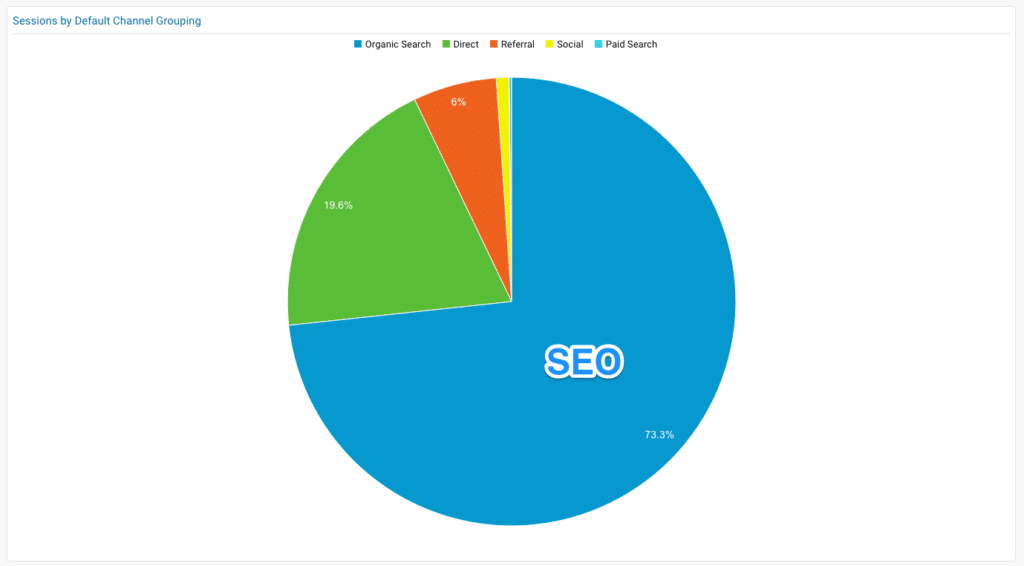
Most purchasing decisions start with a Google search and as such, SEO should still be your #1 source of new traffic, new leads and new revenue.
If it’s not, then this is what to do about it. If it is, then this is how to keep it that way.
How SEO Used To Work
When Google started it was one single internet search engine.
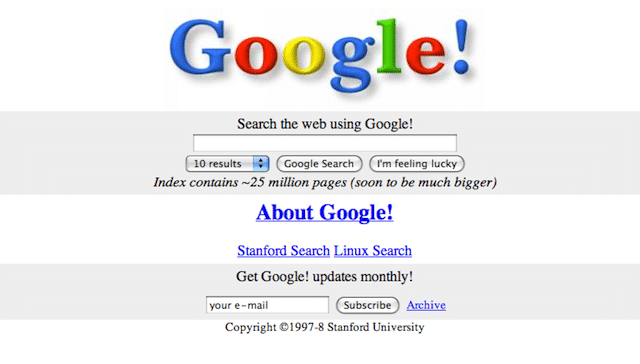
You would log on to google.com to perform a search:
And regardless of who or where you were, you would have seen the same list of businesses from all around the world.
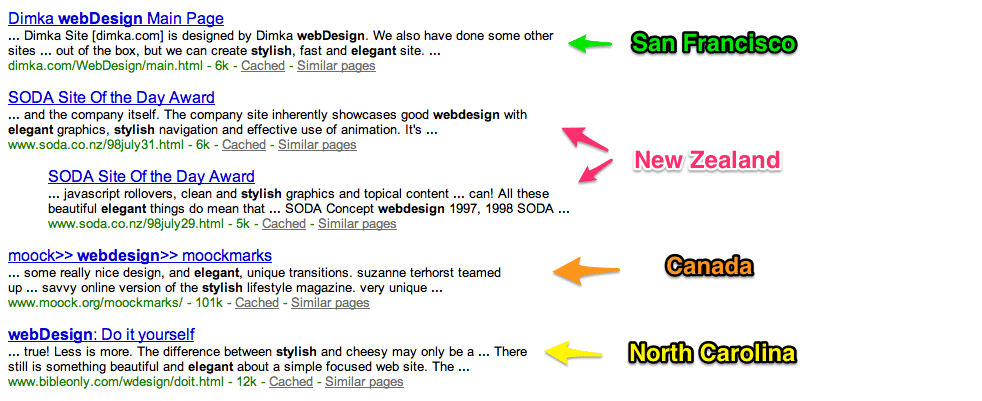
At the time, this was fine.
Google was just getting started, the internet wasn’t very big and there wasn’t that many people using it. But it was growing.

And it got bigger. Much bigger.
In 1998, there were 2.4 million websites on the internet.
Today, there are over 1.2 billion.

And it’s growing by the second:
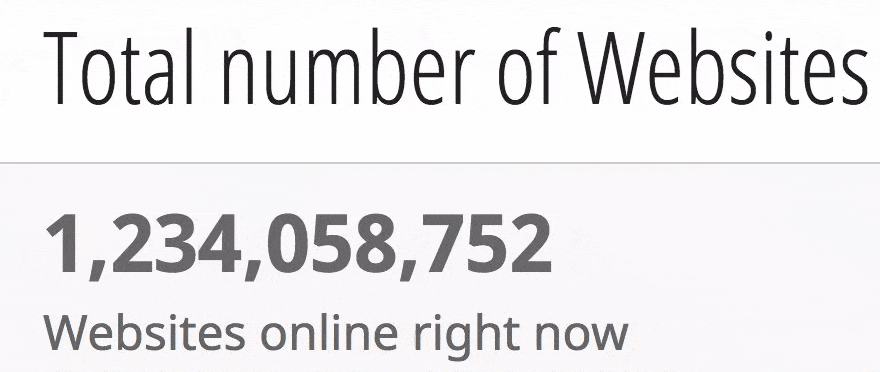
As the volume of websites on the internet grows, so does the volume of people doing Google searches:
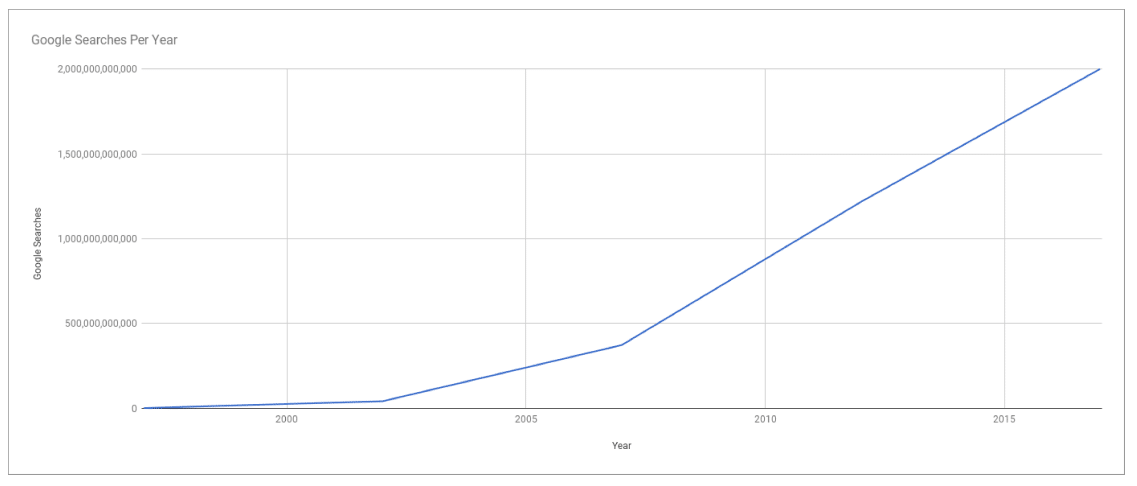
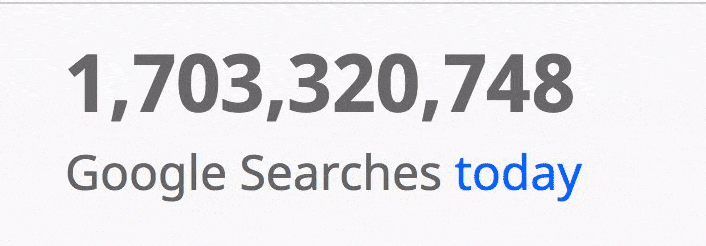
With this much data to process, and this many users to serve, it no longer made sense for Google to show everyone around the world the same list of results. And that’s how we got localised search engines like:
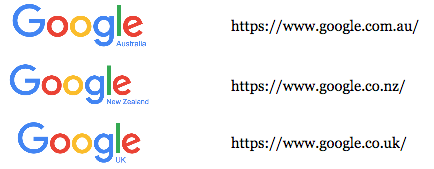
The idea being, to show all users search results that were geographically relevant to their individual location.
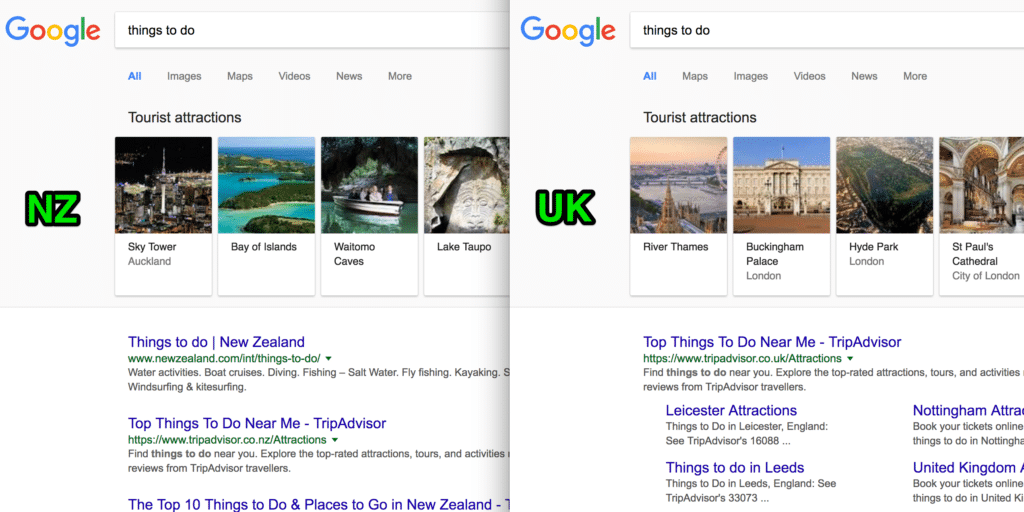
As the growth continued, so did the localisation to the point that most people are familiar with today which is ‘city based’ search engines.

Whether searching a keyword with a local intent like “mechanic” or “mechanic brisbane”, most people would expect to see business that are in their local city.

This is the paradigm most businesses we speak to are familiar with and has been the primary model for decision making around SEO strategy for a long time.
And for a long time, it worked well.
But not anymore. Why?
How SEO Has Changed
Every year, Google makes 500-600 changes to the way it ranks websites. Some changes are small and barely noticeable, while others are game changing and completely re-shape industries.
The Google algorithm update released late last year called “Possum” was a game changer.
The algorithm update caused a massive shake up in the Local Listings which caused many business to lose significant rankings, traffic, leads and revenue.
As such, these changes call for a complete re-think on how to approach your SEO strategy going forward.
But first, there’s a few things you should know about local listings. Local Listings are not new, they started appearing back in search results back in 2007.
Originally the local pack appeared down below the organic listings and showed 7 businesses:

Then, after another curiously named update in 2014 called the “Pigeon”, we slowly started to see the 7 pack turn into a 3 pack, but it was still down the bottom.

Then in 2015 we start to see these Local Listings move up the ranks to where they appear now at the top of the organic listings, right underneath the ads:
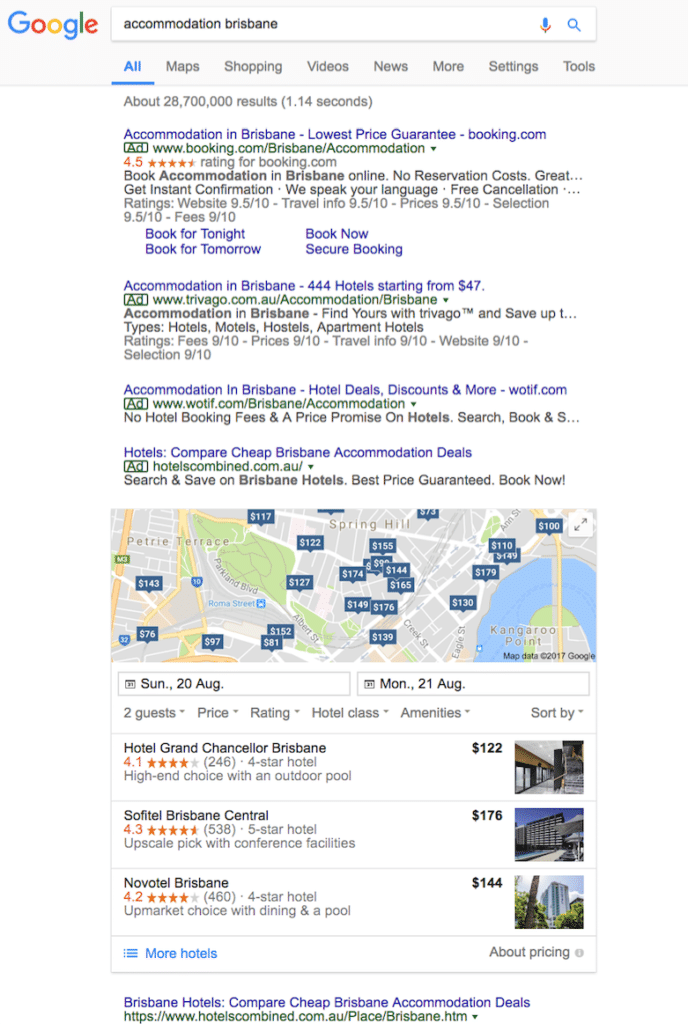
Then, in 2016 our good friend the “Possum” comes along and does 2 key things:
- Firstly, duplicate Local Listings disappeared.
- Essentially any businesses that had more than one listing with the same address or phone number went missing from search results until the problem was fixed.
- Only they weren’t gone, they still existed, Google was just filtering them out.
- This ‘hiding’ is why it’s called the possum.
- While this affected more businesses than you would think, this wasn’t the big change.
- Secondly, Google started placing far greater importance on the physical location of the searcher.
- This was the big one, let’s dive in.
Google has always tried to give users the most relevant results to their query. In many cases, this means showing businesses that are within close proximity to the searcher’s location.
However Google’s understanding of locations and proximity wasn’t always as accurate as it is today. As such, in the past, if you searched for a keyword like “plumbers brisbane”, it wouldn’t really matter if you were in Chermside (10km from CBD) or in Brisbane CBD, you would see the same list of brisbane businesses.

However today, if I search that same keyword from those 2 slightly different locations, even though they are only 10km apart, I will get 2 entirely different search results.

It’s time to say goodbye to ‘city based’ search engines and hello to ‘suburb based’ search engines.
Let’s take a broader look at this by doing a side by side analysis of the same keyword “plumbers brisbane” searched from 5 different local suburbs:
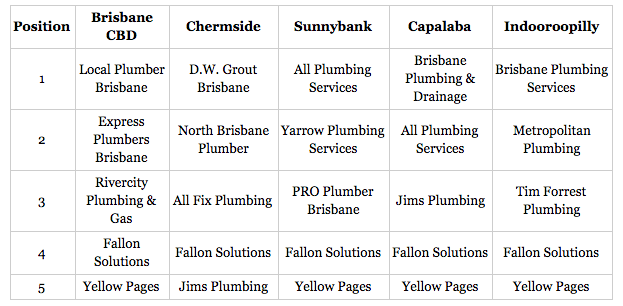
Before the change, all of these locations would have shown the same results.
But as you can see from the above, now, none of these locations show the same results. And nor should they.
Every location is slightly different and there are local suppliers in each suburb that all want the leads, and are all better positioned to handle the leads in their local area.
How SEO Works Now
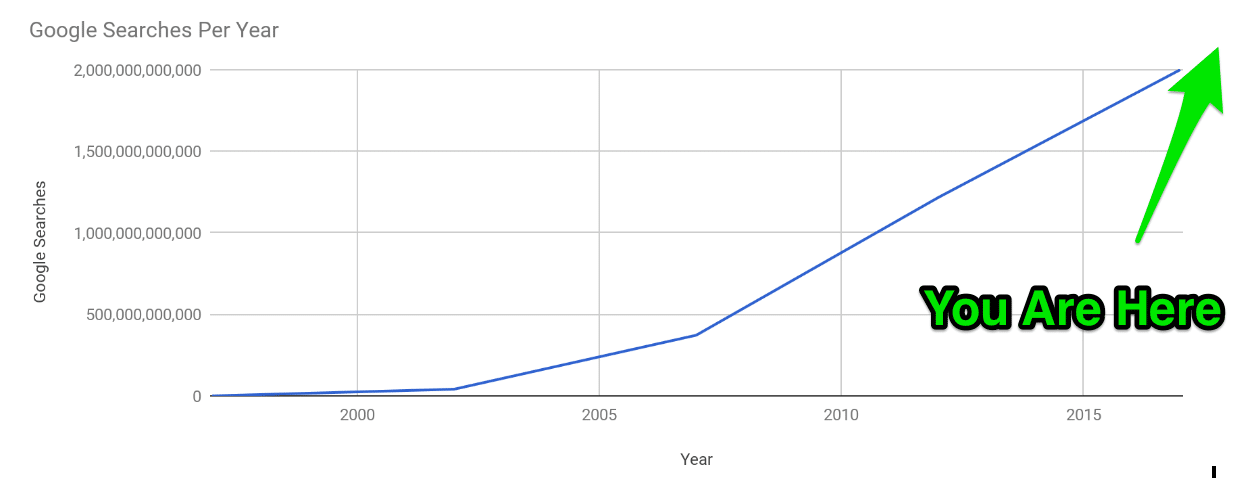
In the past, local SEO campaigns used to be largely based around keywords that included ‘local modifiers’ of the closest major city e.g. ‘plumbers brisbane’ or ‘mechanic sydney’ or ‘lawyers melbourne’.
For a long time, including these local modifiers was imperative for 2 reasons:
- You needed to make it clear to Google where you were located and that you serviced that area.
- Ranking for keywords without a location modifier e.g. “divorce lawyer” instead used to be almost impossible used to be near impossible.
But good news, it’s 2017, Google’s all grown up and neither of those things apply anymore.
- Google now knows where you’re located (and where you’re not).
- And now that local results are shown on all keywords with a local intent, you can now rank in top positions for all sorts of keywords you never thought possible.
What To Change
Track local rankings
When there was only one set of search results, it made sense that everyone would track the same set of ‘city based’ search results, as this accurately emulated what the majority of searchers would see.
Now that everyone sees different results, based on their individual location it makes far more sense to track the local rankings, as if the search was happening within your local area.
There are 2 main reasons for this:
1. The bulk of the demand for local keywords is in the suburbs, not in the city. Contrary to common assumption, only about 20% of searches for local keywords come from within the CBD, with the other 80% are of the demand coming from the suburbs.
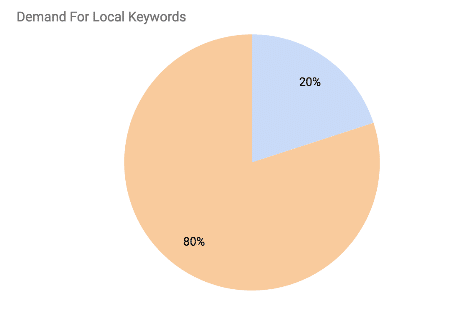
2. Customers that are located closer to you, are more likely to buy from you.
Chase local keywords
When there was only 1 set of search results, only 1 business could be #1 for “home builder” in Brisbane. Now with localised search results, even if someone else is #1 for that keyword in North Brisbane, you can still be #1 for that keyword in South Brisbane or East Brisbane.
Where possible, include these more general keywords in your campaign wherever possible, as these are the most likely to localise, rank and bring you loads of high value local enquiries.
Measure traffic not search volume
Google search volume is a valuable metric for making preliminary campaign planning decisions, however once the strategy is set, the search volume conversation should end.
Reason being?
Google’s search volume metric is a bit bogus. It always has been. That doesn’t mean it’s entirely wrong. It’s just not entirely right. Let me explain.
Firstly, the average monthly searches are not exact, they are all rounded:
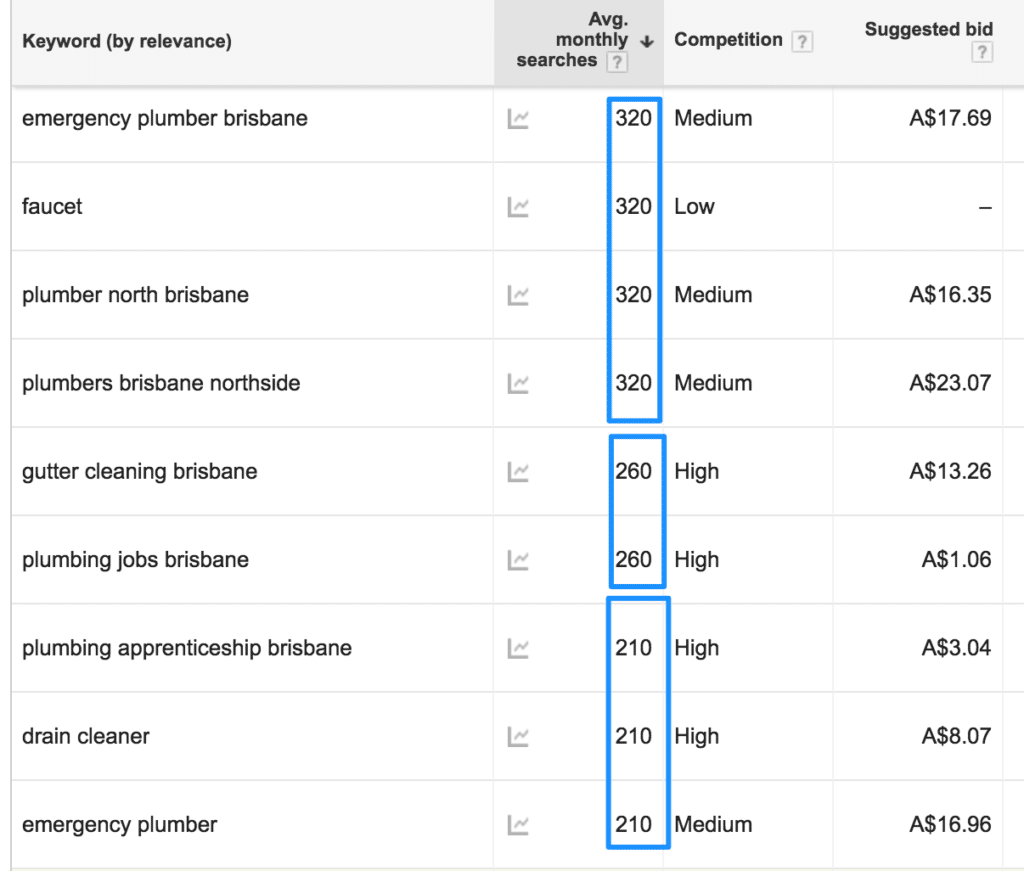
Secondly, the data is not seasonally adjusted to take into account demand fluctuations throughout the year, it’s just averaged out:

Thirdly, it’s a projection that’s not trend adjusted. The search volume metric is the average monthly searches of the last 12 months, not of the next 12 months.
Finally, ‘searches’ are not visitors, nor are they buyers.
Again, while search volume has its place as an indicator in campaign planning, it shouldn’t be the primary metric for measuring ongoing performance.
Instead of focusing on keyword search volume, focus on how much traffic you are generating from organic search.
Is it more or less than this time last year?
Is the traffic turning into sales?
If not, why not?
Get more reviews
Achieving local SEO rankings is about much more than just getting a few Google reviews.
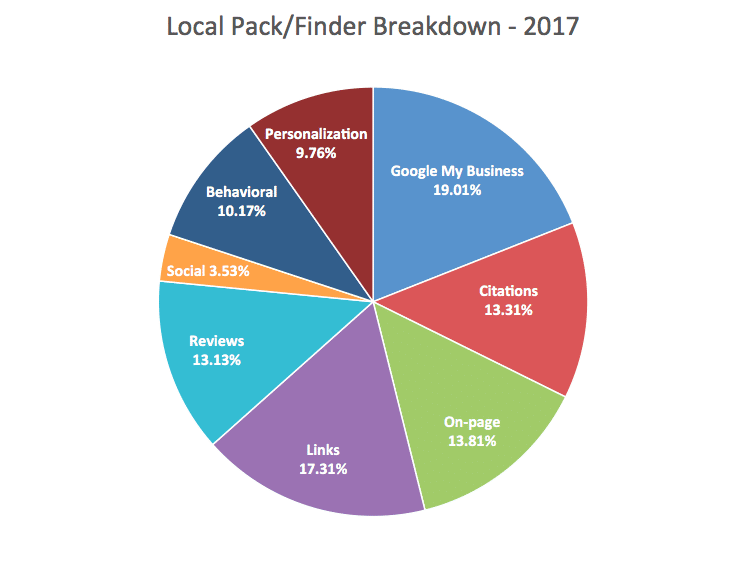
But while reviews are not everything, they are also not nothing. As you can see above, reviews can count for up to 13% of your local ranking authority.
If improving local rankings is important to you (which it is, as by this point you have read 1,500+ words on the subject), then getting regular reviews is probably be the #1 thing you can do, to make it happen sooner.
If you want in, move in
Let’s say your office is on the North side of town but you want leads from the South side of town.
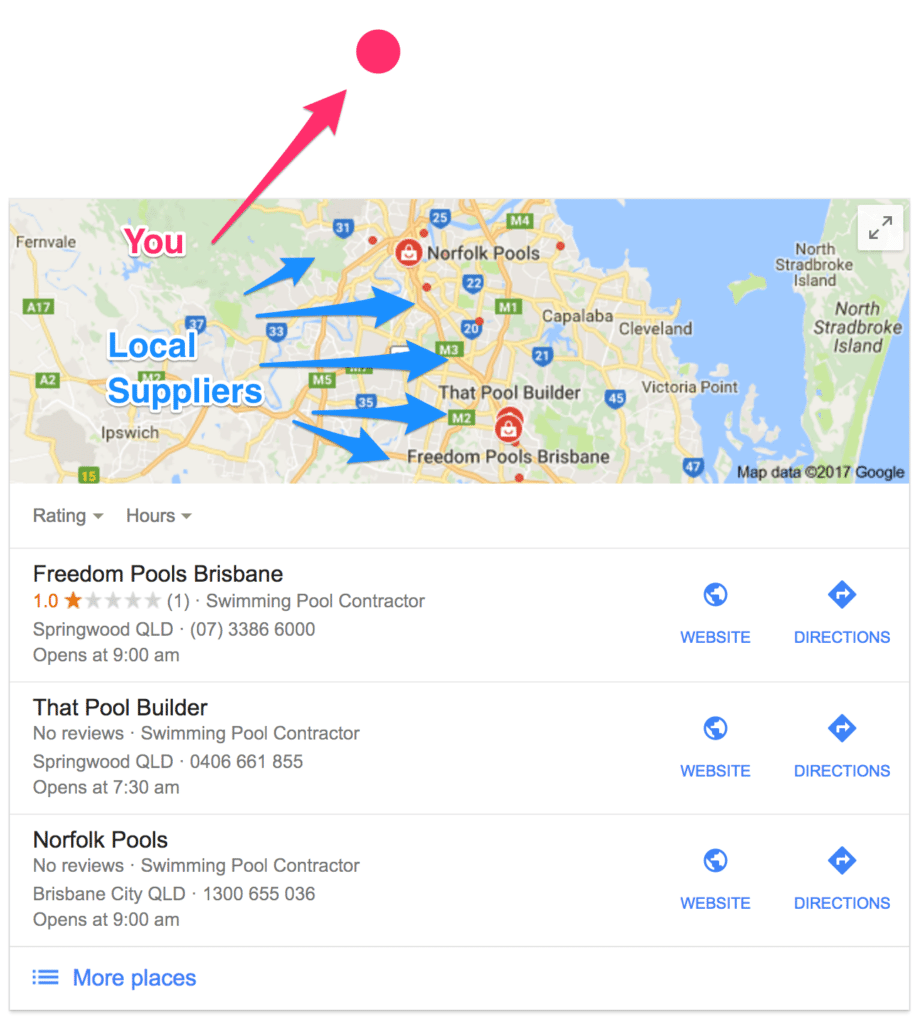
As you can see in the example above, Google already has 10+ suppliers competing to appear in that local area. As such, your chances of outranking them given you are not located in the area are slim to none.
If you’re in this situation, where you want leads from an area that you are not located in; the only real way to get them is to move in. This might sound like a big step, but if that market is really where you want to be, then maybe it is a step worth taking.
Moving your entire operation to that location is one option, but there are also others, like setting up a smaller satellite office or even just a serviced office.
However you choose to go about it, if you want to outrank local suppliers for local keywords, the only way to do it is become a local yourself.
Hopefully, this has helped you understand what’s changed & what you can do to get the most out of your SEO going forward.
For more information, please ask your account manager or get in touch with us here.